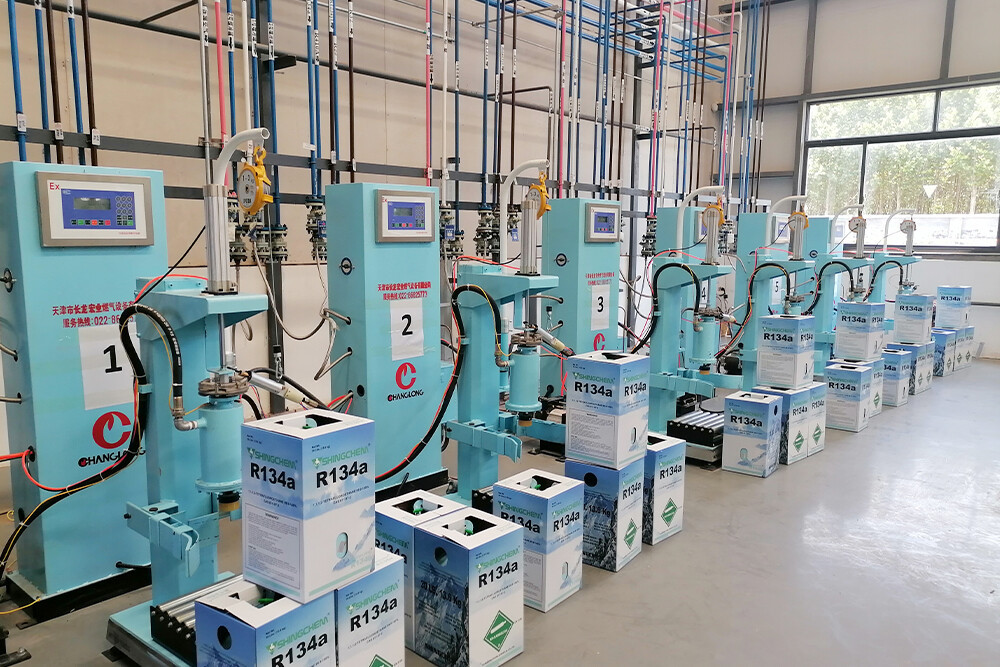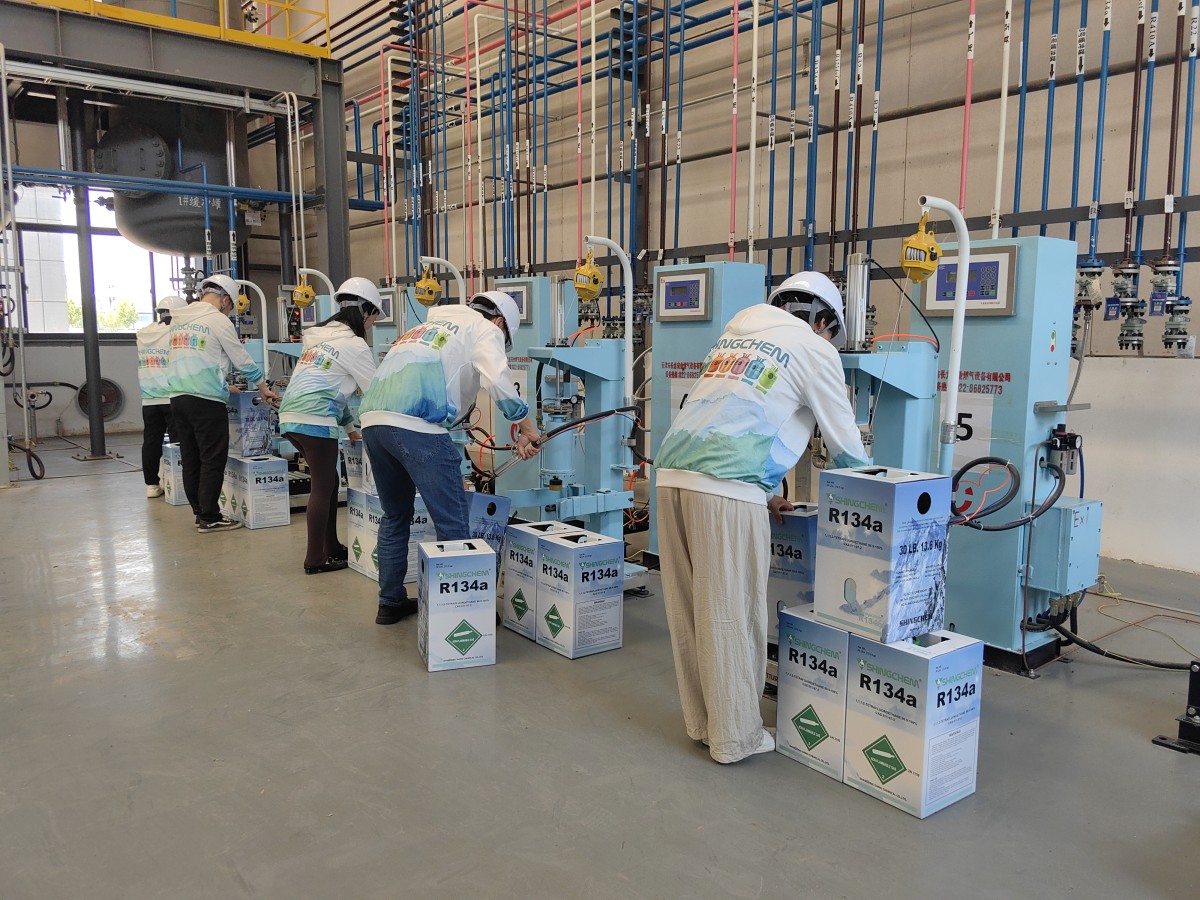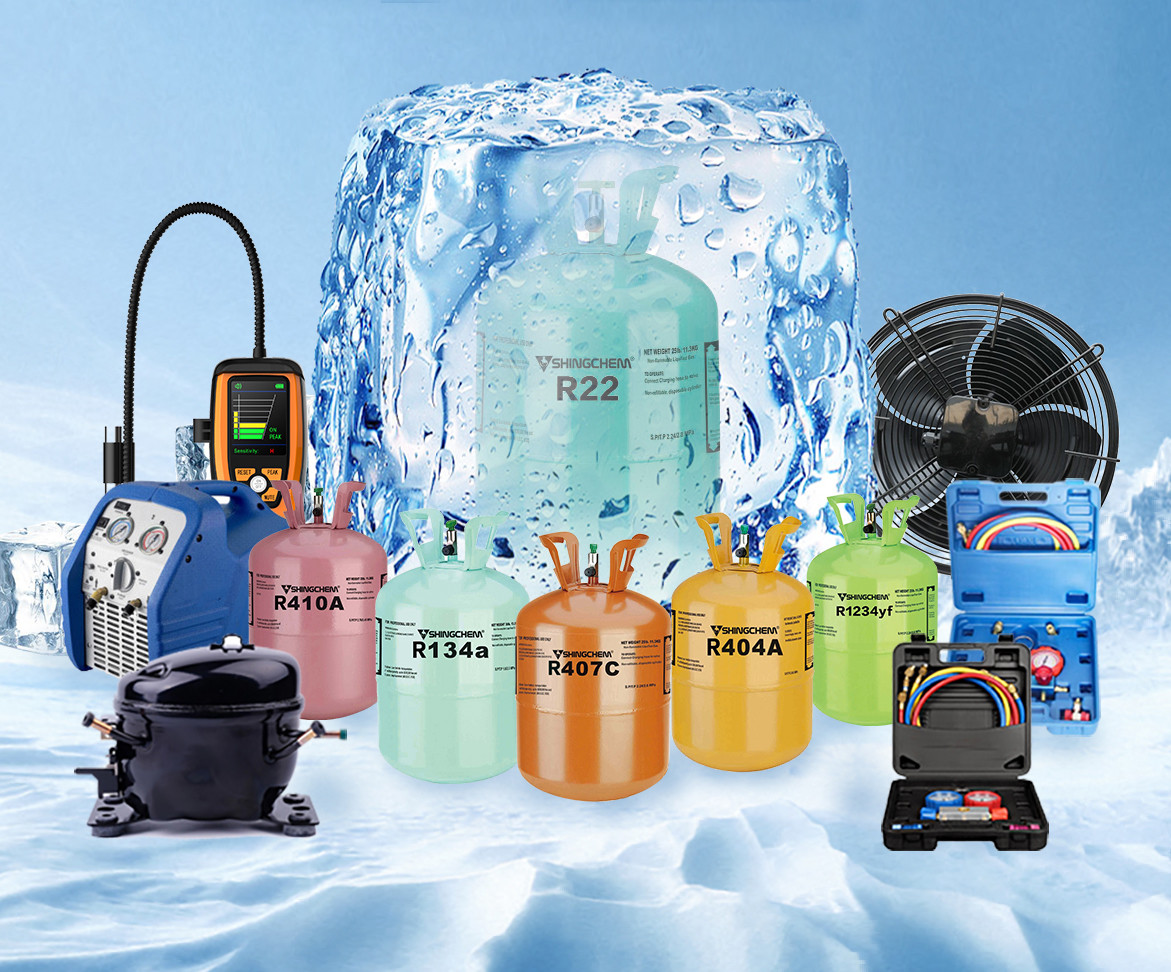
In the global air conditioning and refrigeration industry, efficient, safe and widely compatible refrigerants are the core of the successful operation of the system. R134a (1,1,1,2-tetrafluoroethane) is a mature hydrofluorocarbon (HFC) refrigerant. Since its launch, it has become the preferred solution for many key application areas. This article will introduce the core applications, significant advantages, key equipment and precautions of R134a in detail, providing comprehensive reference information for industry professionals. Partners with import needs are welcome to inquire.
Core Application Areas Of R134a
Due to its excellent physical and chemical properties and thermodynamic properties, R134a plays an irreplaceable role in the following fields:
1. Automotive air conditioning system:
This is the most important and well-known application area of R134a. It has almost completely replaced the old R12 refrigerant and has become the standard refrigerant for air conditioning systems of passenger cars and light commercial vehicles around the world.
R134a is highly compatible with the design of automotive air conditioning systems (including compressors, condensers, evaporators, expansion valves/pipes), providing stable cooling performance and comfort.
2. Medium and low temperature commercial refrigeration:
Supermarket display cabinets: widely used in open and closed refrigerators and freezers in supermarkets.
Cold storage: suitable for small and medium-sized cold storage (refrigeration and freezing).
Ice makers: used in commercial and industrial ice making equipment.
Beverage coolers/vending machines: provide reliable refrigeration for beverage and food preservation.
Transport refrigeration: used in some refrigerated trucks and container refrigeration units.
3. Residential air conditioning and heat pumps (some regions/specific models):
Although it is gradually being replaced by lower GWP alternatives in new equipment (especially in areas with strict regulatory requirements), R134a is still widely used in many existing installed household split air conditioners, window air conditioners and heat pump systems.
4. Industrial process cooling: also used in industrial processes that require specific temperature control.

Significant Advantages And Characteristics Of R134a
Excellent refrigeration performance: Provides efficient refrigeration capacity and good energy efficiency ratio (COP) within the designed application temperature range.
High chemical stability: Stable properties under normal working conditions, not easy to decompose, and prolongs system life.
Safety:
Non-toxic (A1 grade): Non-toxic to the human body at normal working concentrations.
Non-flammable (A1 grade): Non-flammable in air, reducing the risk of fire (in compliance with ASHRAE 34 safety level A1).
Good material compatibility: Good compatibility with metal materials (copper, steel, aluminum) and elastomer sealing materials (such as HNBR, EPDM) commonly used in refrigeration systems.
Good slip characteristics: As a single-component refrigerant (non-azeotropic mixture), it has a zero slip temperature, simplifying system design and maintenance.
Mature alternative: Successfully replaced CFC R12, which destroys the ozone layer, and played a key role in the environmental protection transition stage.
High global recognition: Clear standards, rich technical information, familiar global maintenance network, and easy access.

Supporting Facilities And Equipment Required For R134a Application
The successful application of R134a refrigerant requires the following key supporting facilities and equipment:
1. Special compressor:
Compressors designed for HFC refrigerants (especially R134a) must be used.
Lubricant compatibility is critical. R134a systems usually use POE (polyester) synthetic lubricants or PAG (polyalkylene glycol) synthetic lubricants. PAG oils are mainly used in automotive air conditioning systems, while POE oils are more common in stationary systems. Mineral oil or alkylbenzene oils are strictly prohibited, as they are immiscible with R134a.
The compressor must be capable of handling the specific pressure, temperature and flow of R134a.
2. System components:
Condenser and evaporator: The design needs to match the heat transfer characteristics of R134a.
Expansion device: Thermostatic expansion valve (TXV) or capillary tube needs to be selected according to the flow and pressure drop characteristics of R134a.
Pipes and seals: Use compatible materials (copper tubes, specific steels). Seals must use elastomers that are resistant to R134a and POE/PAG oils, such as HNBR or EPDM.
3. Leak detection equipment:
A highly sensitive electronic leak detector must be used, specifically designed to detect R134a (HFC refrigerants). Soap water leak detection can be used as an auxiliary means, but it is not sufficient to detect small leaks.
4. Refrigerant recovery/regeneration/filling equipment:
Recycling machine: Used to safely and efficiently recover R134a refrigerant and lubricant from the system before the system is repaired or scrapped. The equipment must comply with relevant environmental regulations (such as EPA 608).
Recycling machine (optional but recommended): Filters, dries and purifies the recovered R134a to a reusable standard (AHRI 700), reducing waste and the cost of purchasing new refrigerants.
Electronic scale: Accurately measuring the refrigerant charge is essential.
Manifold instrument group: connects high and low pressure sides, used for system vacuuming, pressure testing, leak detection and charging. Instruments and hoses must be suitable for the pressure range of R134a.
5. Vacuuming equipment:
A good vacuum pump is required to achieve and maintain a very low vacuum degree (usually less than 500 microns) before the system is charged to completely remove moisture and non-condensable gases in the system. Moisture will react with POE oil to form acid, which will seriously damage the system.
6. Safety and protective equipment:
Goggles: prevent accidental splashing of refrigerant to hurt the eyes.
Protective gloves: prevent frostbite (liquid refrigerant temperature is very low) and chemical contact.

Important Notes And Industry Trends
Environmental regulations: R134a has a high GWP value (1430), making it the target of gradual reduction worldwide (such as EU F-Gas regulations, US SNAP program, Kigali Amendment). In new equipment, especially in the field of mobile air conditioning and stationary refrigeration, it is being replaced by lower GWP alternatives (such as R1234yf, R454C, R32, CO₂, hydrocarbons, etc.). It is important to understand and comply with the current regulations in your area.
System compatibility: It is strictly forbidden to mix R134a with R12 or other refrigerants. Systems designed for other refrigerants must not be directly charged with R134a without complete modification and component replacement.
Lubricant management: The correct use and replacement of POE/PAG oil is the key to ensure long-term reliable operation of the system. POE oil is highly hygroscopic and must be strictly protected from moisture.
Leak management: Regular leak detection and maintenance are necessary measures to reduce emissions and ensure system efficiency.
Conclusion
As a long-proven HFC refrigerant in the market, R134a has established a solid position in the global automotive air conditioning and commercial refrigeration fields with its safety, stability, excellent refrigeration performance and wide system compatibility. Despite the transformation pressure brought by environmental regulations, the maintenance and repair needs of its existing huge equipment stock will continue for many years.
As a professional supplier of refrigerant gas, SHINGCHEM has been exporting for 15 years to more than 120 countries around the world. Our gas quality has won the recognition of partners everywhere. At the same time, in order to solve the use problem of R134a, we also provide related supporting facilities, such as the compressors, refrigeration oil, recovery machines, leak detectors, etc. mentioned above. If you have the import demand for refrigerant gas and related accessories, please consult shingchem.com.
